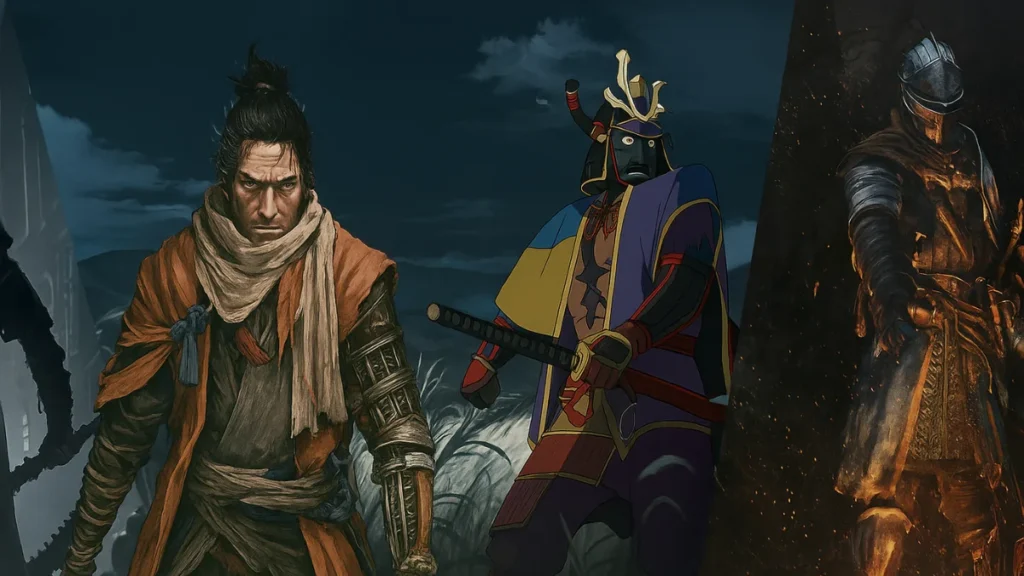When Sekiro: Shadows Die Twice launched in 2019, it was celebrated for its masterful combat, challenging boss design, and richly woven Sengoku-era setting. Its blend of swordplay and resurrection mechanics quickly cemented it as one of FromSoftware’s most distinctive works. Now, the newly announced anime adaptation, Sekiro: No Defeat, aims to bring Wolf’s journey to the screen—and it may also provide an opportunity to strengthen one of the game’s least impactful features: Dragonrot.

Sekiro: No Defeat – Bringing the Wolf to Life
Revealed at Gamescom Opening Night Live 2025, Sekiro: No Defeat is set to debut in 2026 and will stream exclusively on Crunchyroll outside Japan, China, and Korea. It is branded as a Crunchyroll Original, co-produced with Kadokawa and animated by Qzil.la and Arch. Director Kenichi Kutsuna leads the project, with character designer Takahiro Kishida (JoJo’s Bizarre Adventure: Golden Wind) and art director Yuji Kaneko (Star Wars Visions) shaping its look and feel.
The reveal trailer already recreated Wolf’s duel with Genichiro Ashina—including his devastating defeat and the loss of his arm—suggesting a faithful retelling of in-game events. The synopsis frames it as “the tale of a lord and his retainer seeking to restore balance against the Interior Ministry,” firmly rooting the series in Sengoku-era Japan.
What Made Sekiro Special
Sekiro: Shadows Die Twice earned its reputation by redefining swordplay in video games. Its mechanics pushed players to master timing, aggression, and precision:
- Deflect & Posture: Perfect parries build enemy Posture, breaking it to deliver a Deathblow.
- Mikiri Counter: A stylish forward stomp that punishes thrust attacks.
- Deathblows: Finishers that come from broken Posture or stealth positioning.
- Stealth & Grapple: The grappling hook and stealth approach encouraged vertical exploration and surprise attacks.
- Prosthetic Tools & Combat Arts: Swappable prosthetics and learnable moves added versatility and flair.
These mechanics were central to the game’s intensity, though they may be difficult to translate into animation. Still, the anime has the opportunity to capture their spirit through dynamic choreography and faithful recreations of boss encounters.
Dragonrot – From Weak Mechanic to Narrative Opportunity
While Sekiro’s combat soared, Dragonrot was the one system that fell short. In the game, repeated deaths inflicted NPCs with the disease, blocking their dialogue and halting questlines until cured. It also reduced “Unseen Aid,” the small chance to keep money and XP upon death—though in practice, this penalty rarely had real weight.
Conceptually, Dragonrot was brilliant: tying the player’s failures to the suffering of the world around them. But in execution, it felt like little more than a temporary nuisance. It never became a meaningful part of the central narrative, leaving many players to ignore it beyond the occasional cure.
This is where the anime can shine. By removing the need for balance and punishment, Sekiro: No Defeat can explore Dragonrot as a central story thread. Imagine arcs where the disease spreads through Ashina, or moments where Wolf must grapple with the guilt of his immortality harming those he’s sworn to protect. The mechanic that once felt minor could become the heart of the anime’s emotional weight.
Immortality and Storytelling Potential
The title No Defeat alludes directly to Wolf’s inability to truly die. In the game, resurrection was a mechanic; in the anime, it can become a philosophical theme. Immortality can be framed not just as a gift but as a curse, raising questions about sacrifice, humanity, and the cost of power.
Sekiro’s boss battles are legendary for their twists. The Guardian Ape’s shocking revival after decapitation is a prime example of FromSoftware’s dramatic flair. If the anime leans into these moments while tying them to the consequences of resurrection and Dragonrot, it could capture both the spectacle of the fights and the haunting themes beneath them.
Sekiro: No Defeat already has the hallmarks of a faithful adaptation: a strong creative team, stunning animation, and a commitment to Wolf’s journey. But its greatest opportunity lies in expanding Dragonrot into more than a background mechanic. By elevating it into a narrative centerpiece, the anime could transform Sekiro’s weakest feature into one of its strongest—making Wolf’s immortality not only a tool of gameplay, but also the core of a powerful story about the cost of survival. Play Now!

